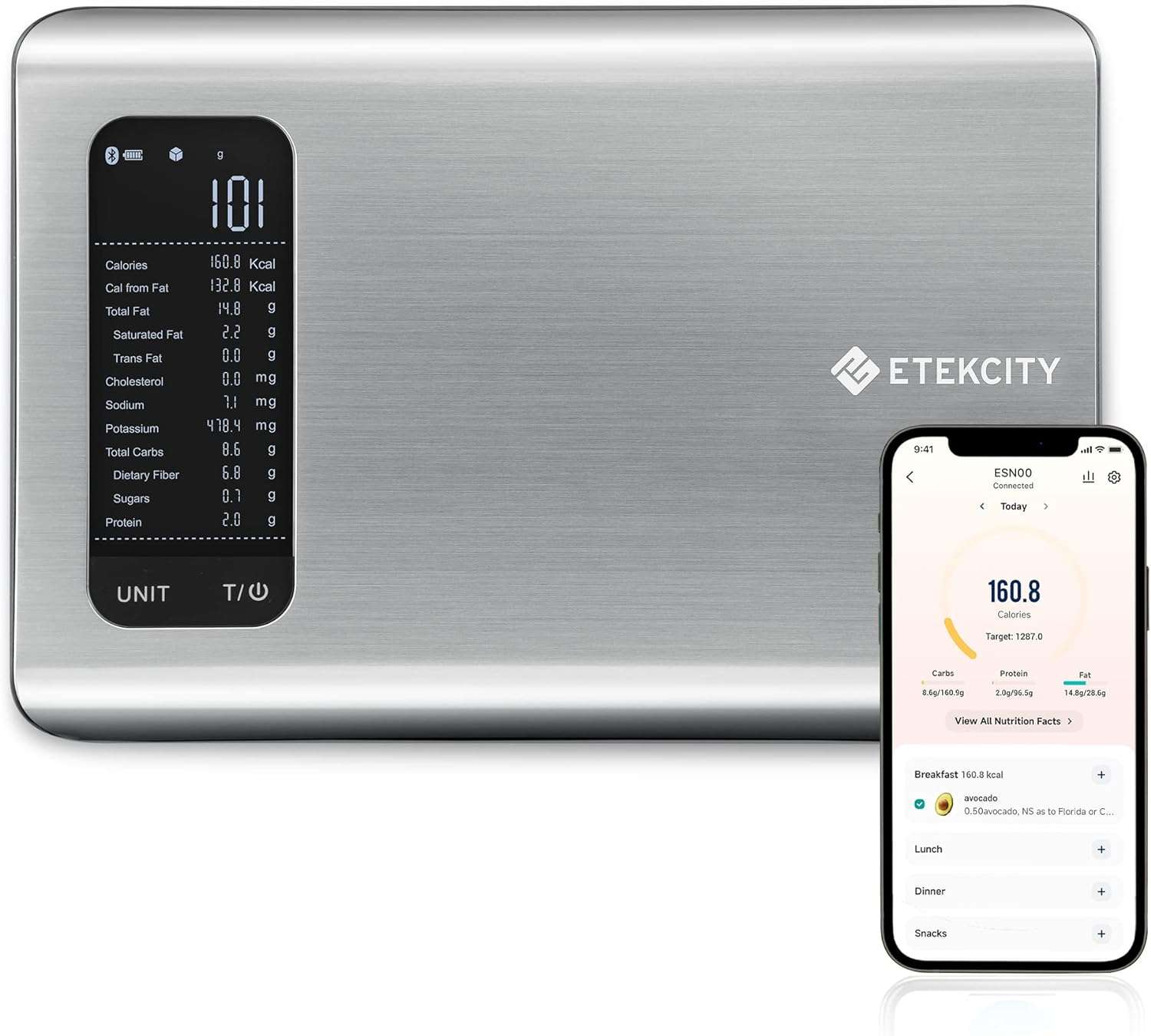Body Fat Calculator: How To Accurately Track Your Body Fat Percentage
By Chantel Ilawole | Updated April 25, 2024
Are you unsure about your body fat percentage and why it matters? Body fat is more than just a number—it’s a key indicator of your overall health. Get your body fat percentage using our free body fat calculator. For a more comprehensive analysis, consider employing a tape measure or a body fat caliper to obtain precise measurements of your physique.
This article will show you the ins and outs of tracking your body fat accurately, using methods trusted by health professionals.
Body Fat Calculator
Understanding Body Fat
Body fat is the amount of adipose tissue in our bodies, not to be confused with body weight. It’s important to track body fat as it can impact overall health and risk for conditions like type 2 diabetes and heart disease.
Definition of body fat
Body fat is made up of essential body fat and storage body fat. Essential body fat keeps us alive and helps women with reproductive health. Men need between 8-19% of this kind of fat, while women need more, around 21-33%.
Storage body fat adds extra padding to our bodies. It sits under our skin and around organs like the heart and stomach. Too much can lead to health problems, but we all need some for energy and to stay warm.
Differences between body fat and body weight
Body fat and body weight are not the same. Your body weight includes muscles, bones, organs, and lots of water. Body fat is just the fat your body stores. Muscles weigh more than fat, so a muscular person might weigh more but have low body fat.
On the other hand, someone can be light in weight but still have a high body fat percentage.
Fat comes in two types: essential and storage, both significant in understanding your body fat percentage range. Essential fat keeps you alive and helps with reproductive functions. Storage fat is what your body saves for energy when you need it later.
Too much stored fat leads to obesity and health issues like heart disease or diabetes. Tracking your body’s muscle versus its fatty tissue is crucial for staying healthy.
Next up we’ll talk about how to measure this very important number: your personal body composition!
Importance of tracking body fat percentage
Knowing your the percentage of fat in your body helps you see if you’re at risk for health problems. It can tell you more than just your weight. Tracking body fat shows how much of your weight is fat and how much is muscle, bone, and water.
This matters because too much fat, especially around the belly, raises the chance of heart disease, diabetes, and high blood pressure.
Keeping an eye on body fat helps with setting fitness goals, too. If you want to get stronger or have more energy, watching changes in your fat levels can guide you. As people age, they tend to lose muscle and gain fat without knowing it.
Looking at both body weight and body fat percentages gives a clearer picture of someone’s health than just stepping on a scale.
Methods for Measuring Body Fat Percentage
There are several methods for measuring body fat percentage, including DEXA scan, hydrostatic weighing, skinfold measurements, and bioelectric impedance. Each method has its own advantages and limitations in accurately tracking the percentage of fat in our body.
DEXA scan
The DEXA scan is highly accurate for measuring body fat percentage, bone density, and lean tissue mass. It utilizes low-dose X-rays to differentiate between bone, lean tissue, and fat mass in the body.
Notably, it provides detailed insight into the location of fat in the body, including visceral fat. This method also offers valuable information for tracking changes in body composition over time.
Using advanced technology, a DEXA scan not only measures body fat percentage but also helps individuals understand their bone density and distribution of lean tissue in their bodies.
Hydrostatic weighing
Moving from the precise measurement offered by DEXA scans, hydrostatic weighing is another accurate method for determining body fat percentage. Also known as underwater weighing, this technique relies on Archimedes’ principle and involves calculating the density of a person’s body.
During hydrostatic weighing, the individual is submerged in water to measure their total body volume and body fat mass assessments, which allows for an estimation of their body composition.
As one of the most accurate methods available, it provides reliable results and is often used as a benchmark for evaluating other body fat measurement techniques.
Hydrostatic weighing plays a crucial role in accurately assessing an individual’s overall health and fitness levels due to its precision in measuring both lean mass and fat mass. This method can be particularly beneficial for those seeking detailed insights into their body composition when tracking progress towards specific fitness or weight management goals.
Skinfold measurements
Skincare measurements involve methods like the Jackson-Pollock and Durnin-Womersley techniques. Each method has specific measurement sites and accuracy levels based on body types. These measurements help calculate body fat percentage, understand weight ranges, and stress the importance of maintaining lean body mass during weight changes.
Skincare measurements correlate with calculators for further guidance on managing body composition and weight. The different skinfold methods provide essential information about an individual’s body fat percentage status in various categories, emphasizing the significance of maintaining a healthy balance between muscle and fat content in the body.
Bioelectric impedance
Bioelectric impedance is a method to measure body fat percentage using a device that sends a low-level electrical current through the body. This current flows more freely through lean tissue, such as muscles, and encounters resistance in fatty tissue, allowing the device to estimate body composition.
While convenient and non-invasive, factors like hydration levels and food intake can affect its accuracy. However, it remains popular due to its affordability and ease of use for tracking changes in body fat over time.
Common Body Fat Calculators
The U.S. Navy Method, BMI Method, YMCA Formula, and CUN Bailey Formula are some of the most commonly used body fat calculators. Each method has its own set of guidelines for measurements and calculations to determine body fat percentage.
U.S. Navy Method
The U.S. Navy method utilizes specific equations developed by the Naval Health Research Center to calculate body fat. It involves taking precise measurements of waist circumference and neck circumference for men, as well as hip circumference for women.
Results obtained from this method may require further precision through bioelectric impedance analysis or hydrostatic density testing to ensure accuracy. The U.S. Navy method plays a crucial role in determining compliance with army recruitment and entry requirements, as it is used in the Army Body Fat Calculator.
By utilizing equations developed at the Naval Health Research Center, the U.S. Navy method accurately calculates body fat percentage using specific measurements such as waist and neck circumference for men, and including hip measurement for women.
BMI Method
The BMI method calculates body fat percentage based on a person’s height and weight. This method uses a simple formula to estimate body fat, making it widely used for its ease and accessibility.
However, it may not account for factors like muscle mass or distribution of fat throughout the body, potentially leading to less accurate results compared to other methods such as DEXA scan or hydrostatic weighing.
Despite its limitations, the BMI method provides a quick way to gauge general health risks associated with excess body fat, and ways to measure body fat to mitigate these issues.
YMCA Formula
The YMCA Formula utilizes specific measurements like gender, age, weight, height, neck, waist, and hip to estimate total body fat. It combines the U.S. Navy method and BMI method for an accurate body fat percentage calculation.
This formula is commonly used in fitness centers and health assessments due to its simplicity and accuracy in estimating body fat percentage based on essential physical measurements.
CUN Bailey Formula
The CUN Bailey Formula is a common body fat calculator that uses measurements of the abdomen, thigh, and weight to estimate body fat percentage. It is specifically tailored for women and offers a practical way to monitor changes in body composition over time.
By plugging these measurements into the formula, individuals can track their progress towards achieving a healthy body fat level.
Now let’s delve into methods for accurately measuring body fat percentage with different calculators.
Tips for Accurately Tracking Your Body Fat Percentage
Pay attention to factors like hydration, time of day, and recent physical activity that could affect your body fat measurement accuracy. Start tracking your body fat level more effectively today by learning about the different methods for measuring it and the common body fat calculators available.
Factors that can affect results
Excess body fat can lead to numerous health complications such as cardiovascular disease, stroke, certain cancers, and diabetes. Visceral fat is associated with the release of specific cytokines, increasing the risk of cardiovascular disease. High levels of LDL cholesterol and insulin resistance are linked to excess visceral fat. Additionally, factors that can affect the accuracy of body fat percentage measurements include:
- Hydration levels
- Time of day
- Recent physical activity
- Age and gender differences in body composition
- Ethnicity and genetic predisposition
How frequently to track body fat
Consistency is key when tracking body fat. Regularly monitoring your body fat percentage – ideally every 4 to 6 weeks – helps in accurately gauging progress towards reaching ideal body fat. This frequency allows for adjustments in diet and exercise routines, ensuring the maintenance of a healthy body fat percentage over time.
Regular tracking, using a BMI calculator, also provides motivation and accountability on the journey towards better health.
It’s essential to establish a routine of regular tracking intervals for accurate assessment of changes in body fat percentage. Tracking too frequently can result in minimal observable differences, while spacing it out too far may miss crucial trends or setbacks in managing body fat levels.
Maintaining a healthy body fat percentage
To maintain a healthy body fat, it’s crucial to engage in regular physical activity and follow a balanced diet rich in lean proteins, fruits, and vegetables. By incorporating strength training exercises into your routine, you can increase muscle mass and reduce body fat.
Monitoring portion sizes and avoiding processed foods high in saturated fats and sugars is key to achieving and sustaining a healthy body fat percentage.
Regular cardiovascular exercise such as brisk walking, swimming, or cycling helps burn calories and maintain a healthy weight. Additionally, staying hydrated by drinking plenty of water supports metabolic function while reducing the risk of overeating due to thirst signals being mistaken for hunger, highlighting the importance of managing body fat through understanding body fat percentage range.
In conclusion, accurately tracking your body fat percentage is vital for managing your overall health. Understanding the different methods and calculators available can help you establish a regular monitoring routine.
By maintaining a healthy body fat percentage, you can reduce the risk of various health complications associated with excess body fat. It’s essential to stay informed about the impact of body fat on your wellness and take proactive steps to manage it effectively.
Tracking your body fat percentage empowers you to make informed decisions about your health and well-being.
FAQs
1. What is a body fat calculator?
A body fat calculator measures your body fat percentage to see how much fat you have compared to lean mass.
2. Why should I track my body fat instead of just my weight?
Tracking body fat shows if you’re losing the right kind of weight, like fat, not muscle, and helps with your overall physical health.
3. Can using skinfold calipers at home give accurate results?
Yes! Skinfold calipers can measure the thickness of your skin and tell how much fat is under it for an estimate of total body fat %.
4. What’s a safe way to lower my body mass index (BMI) without harming my health?
Eating healthy foods, working out regularly, and getting enough sleep can lower BMI safely while taking care of both mental and emotional health.
5. How does excessive abdominal region affect my risk for diseases?
Too much internal body fat in the abdominal area can raise risks for heart diseases, high blood sugar levels, and disorders like sleep apnea.
6. Are there any accurate medical tests that show detailed info about my body composition?
Yes! Dual-energy X-ray absorptiometry (DXA) provides highly accurate details on bone density as well as the distribution of muscle and fatty tissues in the human body.













